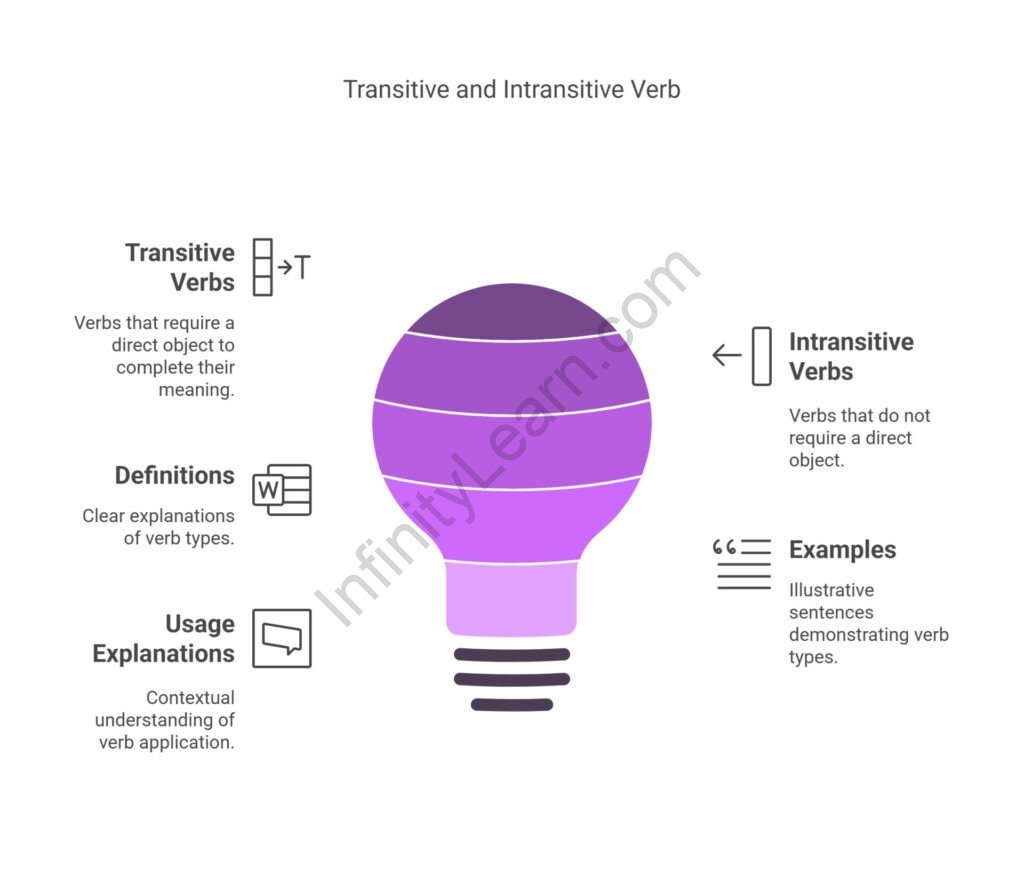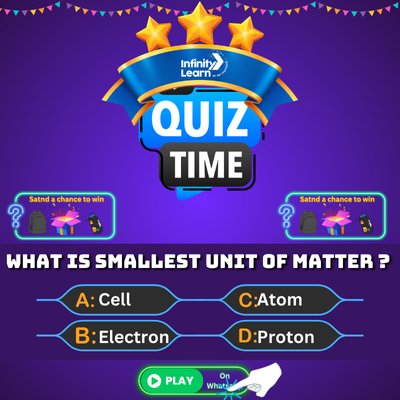Table of Contents
Transitive and intransitive verbs are essential parts of English grammar. Transitive verbs need a direct object to complete their meaning. Intransitive verbs express a complete thought without an object. Students looking for grammar practice will benefit from worksheets on these verbs. They include clear examples, systematic exercises, and explanations of sentence structure.

The Difference Between Transitive and Intransitive Verbs with Examples
The main difference between these verbs is simple. One needs an object, and one doesn’t. This is key to understanding sentence structure.
Transitive Verbs: Words That Need Objects
A transitive verb needs someone or something to receive its action. This receiver is called the direct object. Object recognition in sentences is an important skill.
How to identify transitive verbs in sentences: Just ask “what?” or “whom?” after the verb.
For example: “She reads a book.”
- Ask: “She reads what?”
- Answer: “a book”
- So “reads” is a transitive verb, and “book” is the direct object.
Here’s a list of common transitive verbs with sentence examples:
- Carry: She carries a bag.
- Build: They built a house.
- Write: The boy wrote a letter.
- Teach: She teaches math.
- Buy: We bought groceries.
These are among the top 10 examples of transitive verbs used daily. For more examples of transitive verbs, visit InfinityLearn.
Common Transitive Verbs
| Transitive Verb | Example Sentence | Direct Object |
| bring | Please bring your textbook. | textbook |
| build | They built a treehouse. | treehouse |
| carry | She carries her backpack. | backpack |
| eat | The dog ate its food. | food |
| find | I found my lost pencil. | pencil |
| make | Mom made a cake. | cake |
| read | He reads comic books. | comic books |
| see | We saw a movie. | movie |
| use | They use computers. | computers |
| write | I write stories. | stories |
Intransitive Verbs: Words That Work Alone
An intransitive verb doesn’t need a direct object. The action is complete by itself. When looking at what happens when an object is missing in a sentence, you’ll often find an intransitive verb.
For example: “The baby sleeps soundly.”
- “Sleeps” is the action.
- There’s no direct object receiving the action.
- “Soundly” just tells us how the baby sleeps.
Here’s a list of common intransitive verbs used in daily conversations:
- Sleep: The children slept.
- Arrive: The bus arrived.
- Laugh: Everyone laughed.
- Run: She runs every day.
- Fall: The leaves fell.
Intransitive verb examples with adverbs or prepositional phrases often work with:
- Adverbs: She walked slowly. (using prepositional phrases with intransitive verbs)
- Time words: He arrived at noon.
- Places: The flower grew in the garden.
Common Intransitive Verbs
| Intransitive Verb | Example Sentence | Note |
| appear | The rabbit appeared suddenly. | No direct object |
| arrive | The train arrived late. | No direct object |
| fall | The leaves fall in autumn. | No direct object |
| go | We go to school daily. | No direct object |
| happen | The accident happened yesterday. | No direct object |
| laugh | The children laughed loudly. | No direct object |
| run | She runs every morning. | No direct object |
| sit | He sat on the chair. | No direct object |
| sleep | The baby sleeps peacefully. | No direct object |
| swim | They swim in the lake. | No direct object |
Ambitransitive Verbs: Verbs That Can Be Both
Can a verb be both transitive and intransitive? Yes! Some verbs can be both transitive and intransitive. These special verbs, known as ambitransitive verbs examples, change how they work depending on the sentence.
For example, the verb “open”:
- Transitive: “He opened the door.” (Door is the direct object)
- Intransitive: “The door opened.” (No direct object)
Understanding these verbs helps with grammar analysis: when does a verb become transitive? It depends on whether there’s a direct object or not.
Verbs That Can Be Both Transitive and Intransitive
| Verb | Transitive Example | Intransitive Example |
| begin | She began her homework. | The movie began at 7 pm. |
| break | He broke the glass. | The glass broke easily. |
| cook | Mom cooks dinner. | Dad cooks very well. |
| drive | I drive a blue car. | She drives carefully. |
| eat | The boy eats an apple. | We eat at 6 pm. |
| grow | Farmers grow vegetables. | Children grow quickly. |
| play | She plays the piano. | The children play in the park. |
| read | He reads books. | She reads before bedtime. |
| start | I started my project. | The race starts soon. |
| stop | The policeman stopped the car. | The train stopped suddenly. |
Grammar Rules for Transitive and Intransitive Verbs Explained
Here’s a simple chart for verb classification:
| Verb Type | What It Means | Example | Verb | Direct Object |
| Transitive | Needs an object | The cat chased the mouse. | chased | the mouse |
| Intransitive | Works alone | The baby sleeps. | sleeps | (none) |
| Can be both (Transitive use) | Depends on sentence | She opened the door. | opened | the door |
| Can be both (Intransitive use) | Depends on sentence | The door opened. | opened | (none) |
This chart shows the basic grammar rules for transitive and intransitive verbs explained simply.
Transitive and Intransitive Verbs Worksheet
Let’s practice with these free printable worksheets for transitive and intransitive verbs! These verb exercises and English grammar exercises will help you master these concepts.
Exercise 1: Verb Identification Techniques – Spot the Difference
For each sentence, tell if the bold verb is transitive (T) or intransitive (I). This helps with how to identify transitive and intransitive verbs in sentences.
- The dog barked loudly. (___)
- She wrote a letter to her friend. (___)
- The sun shines brightly. (___)
- He kicked the ball across the field. (___)
- They arrived late. (___)
- We watched a movie last night. (___)
- The baby cried for her mother. (___)
- He built a sandcastle on the beach. (___)
- The train stopped suddenly. (___)
- She drank a glass of water. (___)
- The children played outside all afternoon. (___)
- My mother cooked dinner for us. (___)
- He ran quickly down the street. (___)
- They painted the walls blue. (___)
- The old man sat under the tree. (___)
Exercise 2: Direct Object Identification – Find the Object
For each sentence in Exercise 1 with a transitive verb, write down the direct object. If the verb is intransitive, write “none.” This helps with object recognition in sentences.
- Object: (______________)
- Object: (______________)
- Object: (______________)
- Object: (______________)
- Object: (______________)
- Object: (______________)
- Object: (______________)
- Object: (______________)
- Object: (______________)
- Object: (______________)
- Object: (______________)
- Object: (______________)
- Object: (______________)
- Object: (______________)
- Object: (______________)
Exercise 3: Fill-in-the-blank Exercises on Transitive Verbs
Fill in each blank with a transitive verb from this list. This is a great fill-in-the-blank exercise on transitive and intransitive verbs.
Word Box: wrote, designed, carries, know, bought, find, likes, baked, gave, watch, repaired
- She ______________ a beautiful dress for the party.
- He ______________ the answer to the hard question.
- The mailman ______________ the letters to the houses.
- They ______________ a new car last week.
- I ______________ all of her songs.
- We ______________ a yummy cake for dessert.
- The teacher ______________ the students extra homework.
- Can you ______________ your keys?
- My friend ______________ his broken bicycle.
- Did you ______________ the game last night?
Exercise 4: Interactive Activities for Learning Intransitive Verbs
Fill in each blank with an intransitive verb from this list. These are examples of intransitive verbs in context.
Word Box: laughed, slept, shines, cried, arrived, ran, sat, walked, appeared, waited
- The stars ______________ brightly in the night sky.
- The baby ______________ all night.
- They ______________ at the funny joke.
- He ______________ to the bus stop.
- She ______________ for the train.
- The guests ______________ at the party on time.
- The cat ______________ on the soft rug.
- He ______________ quickly to catch up with his friends.
- Suddenly, an idea ______________ in her mind.
- We ______________ peacefully until morning.
English Vocabulary
Exercise 5: Sentence Transformation Worksheets for Transitive and Intransitive Verbs
Rewrite this sentence, changing the bold verb from transitive to intransitive. This is a sentence rewriting activity that helps you understand how transitive verbs affect sentence meaning.
She sang a beautiful song.
Your new sentence: ______________________________
For more interactive activities for learning transitive and intransitive verbs, visit InfinityLearn. They offer the best resources for understanding transitive and intransitive verbs.
Check Your Answers: Transitive vs. Intransitive Verb Exercises with Answers
Exercise 1: Spot the Difference
- The dog barked loudly. (I)
- She wrote a letter to her friend. (T)
- The sun shines brightly. (I)
- He kicked the ball across the field. (T)
- They arrived late. (I)
- We watched a movie last night. (T)
- The baby cried for her mother. (I)
- He built a sandcastle on the beach. (T)
- The train stopped suddenly. (I)
- She drank a glass of water. (T)
- The children played outside all afternoon. (I)
- My mother cooked dinner for us. (T)
- He ran quickly down the street. (I)
- They painted the walls blue. (T)
- The old man sat under the tree. (I)
Exercise 2: Find the Object
- none
- a letter
- none
- the ball
- none
- a movie
- none
- a sandcastle
- none
- a glass of water
- none
- dinner
- none
- the walls
- none
Exercise 3: Fill in the Blanks with Transitive Verbs
- She designed a beautiful dress for the party.
- He knew the answer to the hard question.
- The mailman carries the letters to the houses.
- They bought a new car last week.
- I like all of her songs.
- We baked a yummy cake for dessert.
- The teacher gave the students extra homework.
- Can you find your keys?
- My friend repaired his broken bicycle.
- Did you watch the game last night?
Exercise 4: Fill in the Blanks with Intransitive Verbs
- The stars shine brightly in the night sky.
- The baby slept all night.
- They laughed at the funny joke.
- He walked to the bus stop.
- She waited for the train.
- The guests arrived at the party on time.
- The cat sat on the soft rug.
- He ran quickly to catch up with his friends.
- Suddenly, an idea appeared in her mind.
- We slept peacefully until morning.
Exercise 5: Change the Sentence
Original: She sang a beautiful song. (Transitive) New sentence: She sang beautifully. (Intransitive)
This shows how passive voice transformation works with these verbs.
Real-world Applications of Transitive and Intransitive Verbs
Knowing about transitive and intransitive verbs helps you:
- Write better sentences
- Say what you mean clearly
- Fix mistakes in your writing
- Get better at English
- Understand complex sentence structures with transitive verbs
This step-by-step guide to transitive and intransitive verbs is part of what teachers use when teaching transitive and intransitive verbs in English grammar.
For more student grammar resources, check out InfinityLearn. There you’ll find writing prompts for verbs and grammar practice worksheets.
| Check More Worksheet Class-wise |
| Worksheet for Class 1 |
| Worksheet for Class 2 |
| Worksheet for Class 3 |
| Worksheet for Class 4 |
| Worksheet for Class 5 |
| Worksheet for Class 6 |
| Worksheet for Class 7 |
| Worksheet for Class 8 |
| Worksheet for Class 9 |
| Worksheet for Class 10 |
Transitive and Intransitive Verbs Worksheet FAQs
Can a verb be both transitive and intransitive?
Yes! Some verbs can be both, depending on how they are used in the sentence. For example, 'open' is transitive in 'I opened the door,' but intransitive in 'The door opened.'
What is an object in a sentence?
An object is the noun or pronoun that receives the action of a verb. In 'She reads a book,' 'book' is the object.
Are all action verbs transitive?
No. Some action verbs, like 'run' or 'laugh,' don’t need an object to make sense and are intransitive.
Can a sentence have both a transitive and intransitive verb?
Yes. For example, in 'She ate and then slept,' 'ate' is transitive, and 'slept' is intransitive.
How do I know if a verb is transitive or intransitive?
Look for an object. If the verb affects something, it’s transitive. If the action stands alone, it’s intransitive.
Are linking verbs transitive or intransitive?
Linking verbs, like 'is' or 'seems,' are neither transitive nor intransitive because they don’t show action. They connect the subject to more information.








